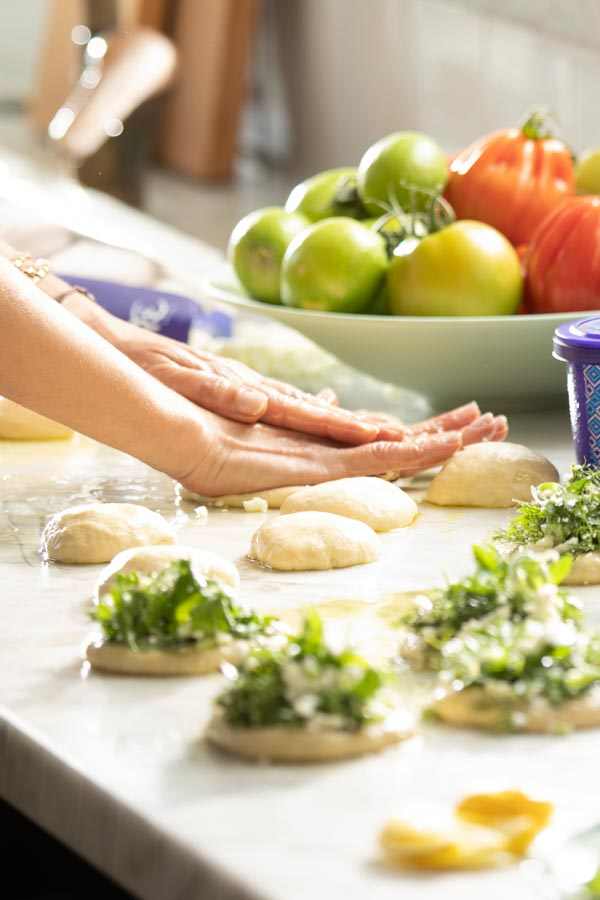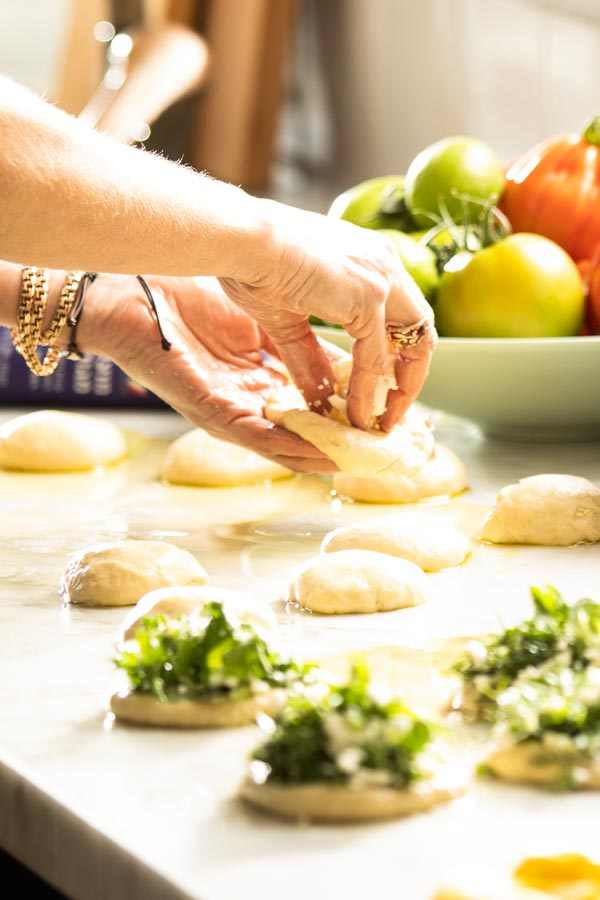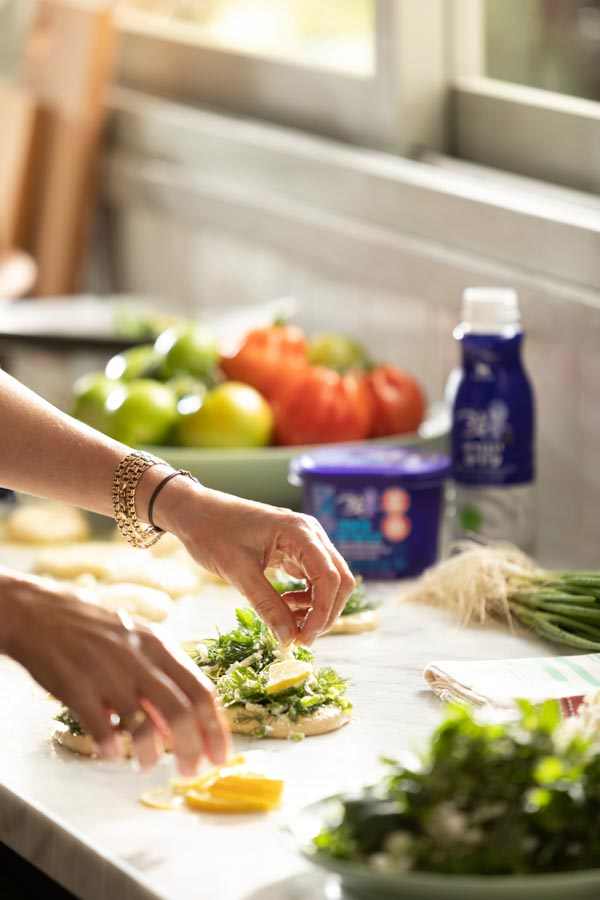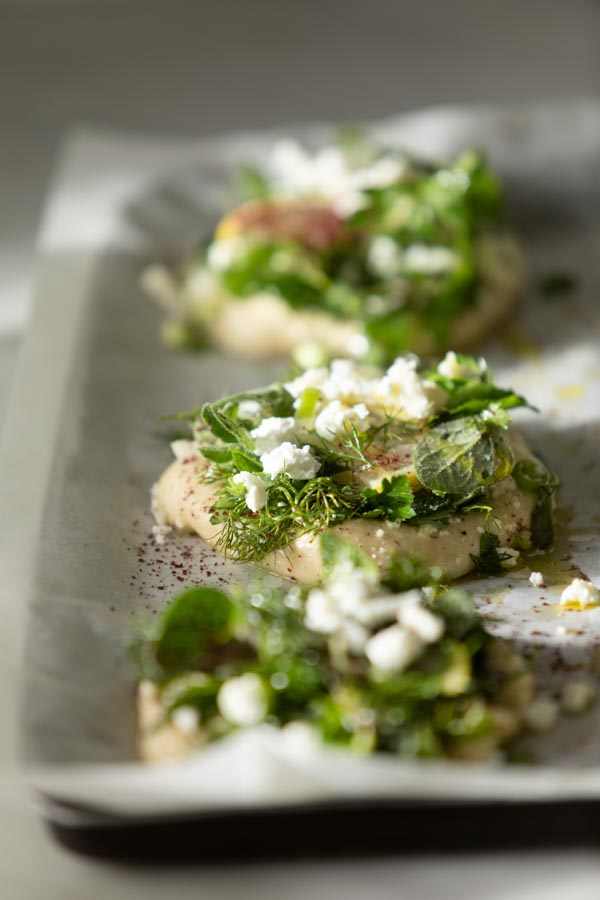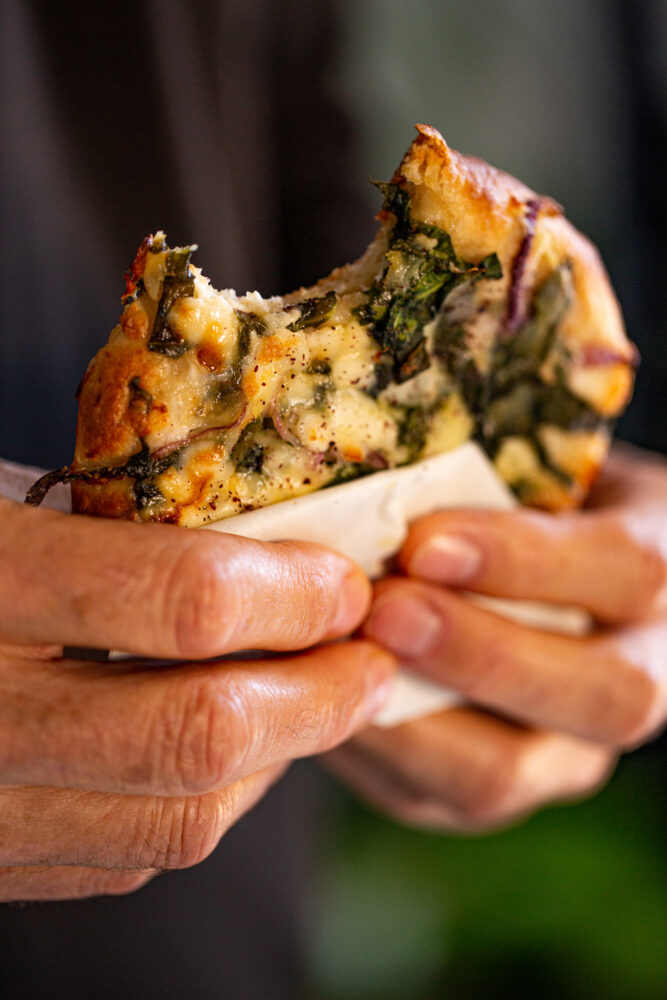By Tami Klein
Posted in culinary
16 personal pastries
Lahmacun, as it is known in English, is a traditional pastry beloved throughout the Levant. Freshly-baked, hot and crispy, it is sold every morning at the food stalls on the streets of Levantine cities. The classic pastry, consisting of a thin, crispy yeast dough topped with a crumbly meat mixture, seasoned with chopped fresh tomatoes, pomegranate concentrate, spices and pine nuts, is baked in a hot oven.
In Turkey, you can also find a vegetarian version, topped with spinach and cheese, which is called simply “Achun” (“Lachma” means meat in Arabic). It is my favorite version. What captivates my heart about the vegetarian version is the cheese that is embedded in the dough. (The ball of dough is spread out on the palm, cheese added and the ball reclosed). There is also cheese in the topping, together with the spinach, making it a special treat: a crisp but flexible pastry.
The secret of the magic of Turkish dough is the combination of yeast, flour and goat’s milk yogurt, which produces a soft, easy-to-work dough.
For variety, you can replace the spinach in the topping with a mixture of fresh herbs such as: oregano, hyssop, parsley, mint, dill, coriander (of your choice).
Materials
For the dough:
½ kg (3½ cups) flour (preferably white bread flour, 00)
2 tablespoons (25 g) sugar
2 teaspoons dry yeast
1½ teaspoons salt
⅓cup (80 ml) olive oil + a little more for the bowl
1 beaten egg
1 tablespoon vinegar (preferably apple cider vinegar)
1 cup (250 ml) goat yogurt
For topping:
300 grams of grated cheese mixture of you choice: mozzarella, kashkaval, manchego, gouda, etc. You can buy a ready-made mixture like Gad’s Quattro Fromage.
1 cube (250 g) 20% fat, sheep’s milk feta, coarsely crumbled
2 cups of chopped spinach or a mixture of leaves from the following herbs (of your choice): oregano, hyssop, parsley, mint, dill, coriander
½ cup green onion, finely chopped or 1 purple onion sliced into thin circles
2 tablespoons olive oil
1 lemon, halved and thinly sliced (optional)
1-2 tablespoons sumac (optional)
Preparation
- Prepare the dough: Slowly mix the flour, sugar, yeast and salt in a mixer with a kneading hook. While stirring, add the olive oil, egg, vinegar and yogurt and mix for ½ a minute just until dough begins to form. If there is flour left at the bottom of the bowl and the dough is hard, add a tablespoon of yogurt.
- Increase the kneading speed to medium and knead for 10 minutes until the dough is flexible and slightly sticky. Transfer the dough to a bowl generously greased with olive oil and turn it over gently until it is coated in oil. Cover the bowl with cling wrap and a towel; let it rise for about two hours in a warm place. You could also let it rise overnight in the refrigerator. The next day, remove it from the refrigerator and let it rise for one more hour before dividing the dough into balls.
- Depress the dough to remove the air and using oiled hands, divide it into 16 small balls weighing 50 grams each. Place the balls at intervals on a pan lined with baking paper greased with olive oil. Cover with a towel and set aside for 20 minutes.
- Preheat oven to 210°C.
- Mix the grated cheeses and feta crumbs in a bowl. With oiled hands, spread the dough balls, forming a circle, on the work surface or on your palm. Place a tablespoon of the cheese mixture on each dough circle and close into a ball. Return the dough balls to the pan and flatten into rounds about 10 cm in diameter.
- Add chopped spinach or herb mixture, and green onion (or purple onion with olive oil) to the cheese mixture left in a bowl and mix. Make a generous pile of this mixture on each round of dough, and flatten/tighten the dough. If desired, top with a slice of lemon and/or a sprinkle with sumac.
Bake for 15 minutes until deep golden. Serve hot.
